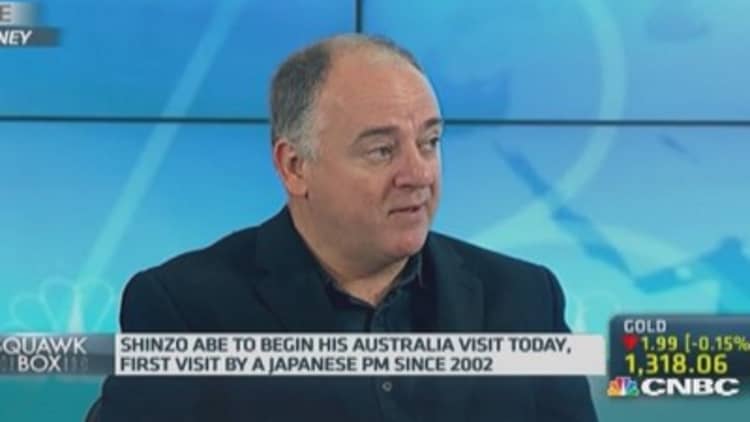Australian employment posted a solid rise in June, beating forecasts, but that did not prevent the unemployment rate from matching a decade peak of 6.0 percent as more people went looking for work.
A net 15,900 jobs were created in June, topping market estimates of 12,000, data from the Australian Bureau of Statistics showed on Thursday. Full-time jobs dipped 3,800, but that followed a hefty gain in May.
The unemployment rate of 6.0 percent was a tick above forecasts and matched the January reading, which had been the highest in a decade.
Read MoreWhy Australia sharesmay be poised to rally
That soured hopes that the jobless rate had peaked for this cycle.
"It's a mixed bag. We're still generating positive jobs numbers and that's good, but equally we've hit the sticker-shock number of 6 percent," said Michael Blythe, chief economist at Commonwealth Bank.
"The bottom line is the economy is strong enough to be generating positive jobs growth, but it does underline the RBA's point of view that it's going to be a pretty slow grind before the unemployment rate is back on a downtrend again."
Read MoreChina keeps closewatch as Abe visits Australia
To stop the unemployment rate rising over time, Australia needs monthly jobs gains of at least 15,000 to match its relatively rapid population growth of 1.7 percent a year.
That is one reason the Reserve Bank of Australia (RBA) has cautioned that it would likely be many months before the unemployment rate began to fall in a sustained manner.
The central bank has committed to keeping rates low for some time to come as the economy struggles with fading mining investment and a stubbornly high currency.

The steady outlook is reflected in the futures market which implied the cash rate would remain at 2.5 percent well into next year. It also limited the impact of the mixed data on the local dollar, which eased only marginally to $0.9413.
Building jobs
With a decade-long boom in mining investment on the wane, the central bank is wagering that a revival in the housing market would provide a well-spring of new jobs.
Read MoreAustralia central bank keeps rates steady, as expected
Recently released data on employment by industry suggests the transition is under way, with jobs in construction up by 43,600 in the year to May, while those in the rental, hiring and real estate sectors increased by 36,000.
Employment in mining held steady over the year to May and, while media reports of mass layoffs in manufacturing are almost a weekly event, total jobs in the sector actually edged up by almost 5,000.
Instead, the biggest decline in jobs was in wholesaling, which analysts suspect has more to technological change than a lack of demand.
Read MoreWhy manufacturing jobs are returning to the states
"Mining is no longer driving job gains across the economy, but rather the construction or purchase of houses and apartments," said Craig James, chief economist at CommSec.
"The fact that the housing market is labor intensive augurs well for job creation, spending and overall economic momentum."

